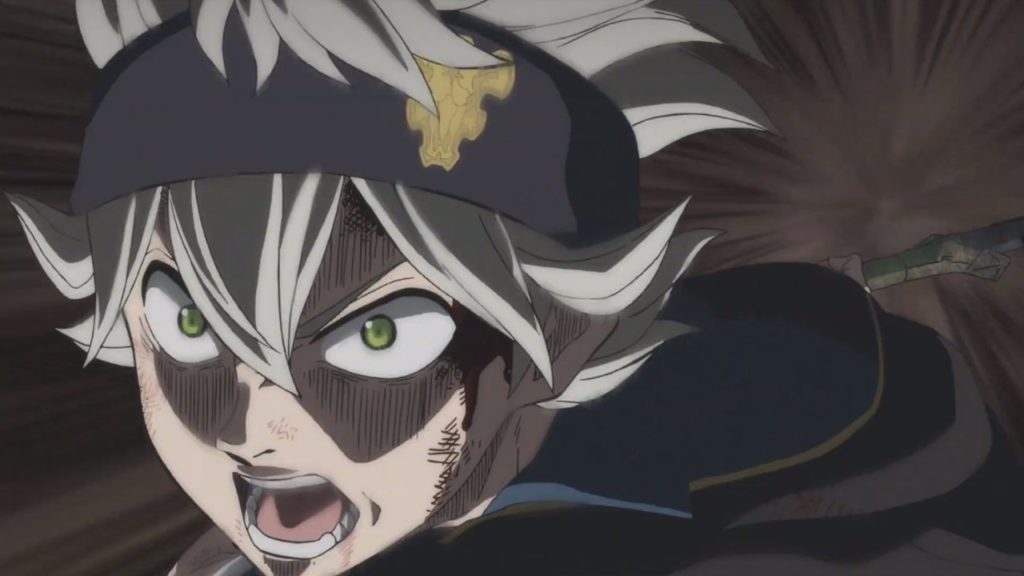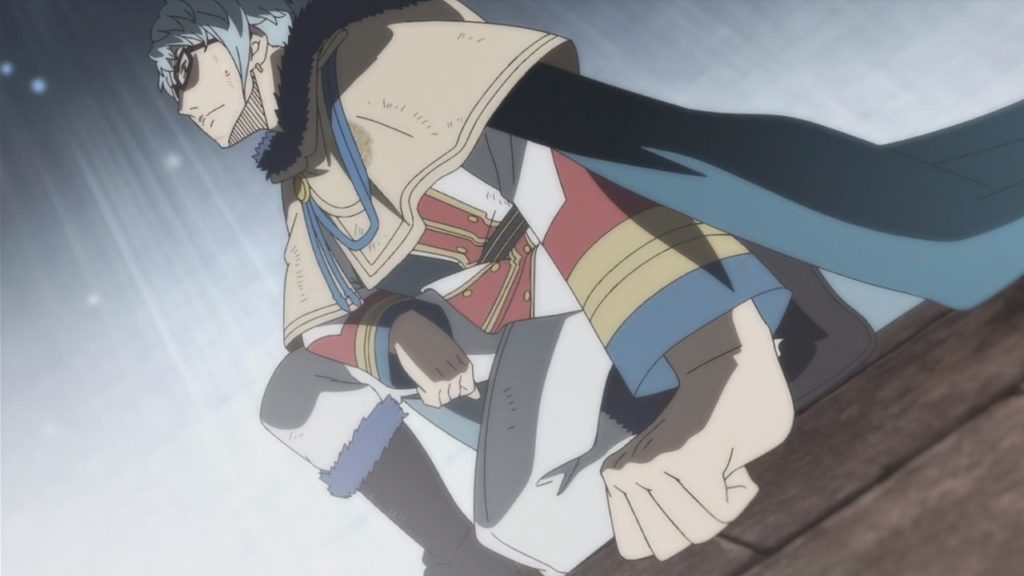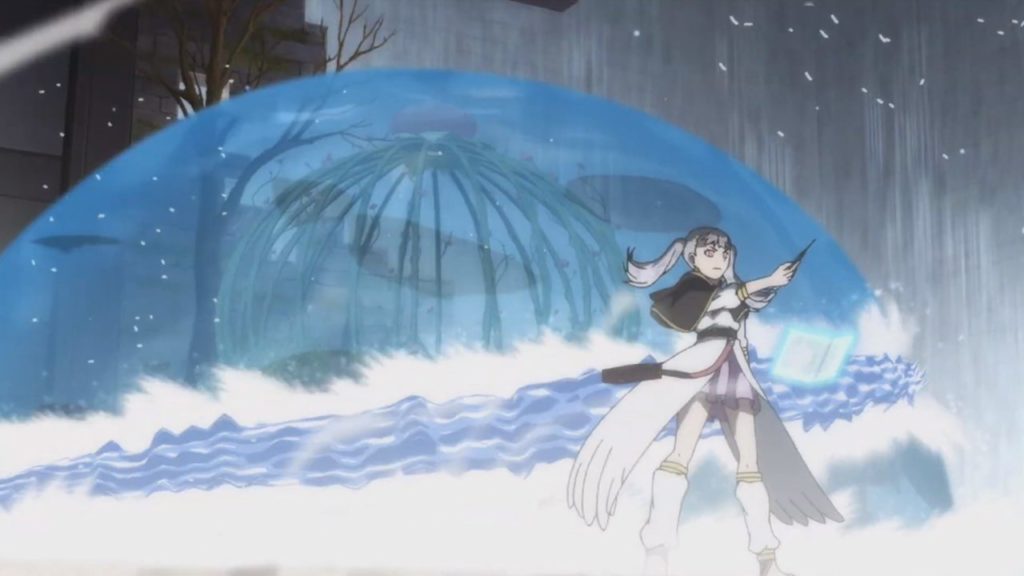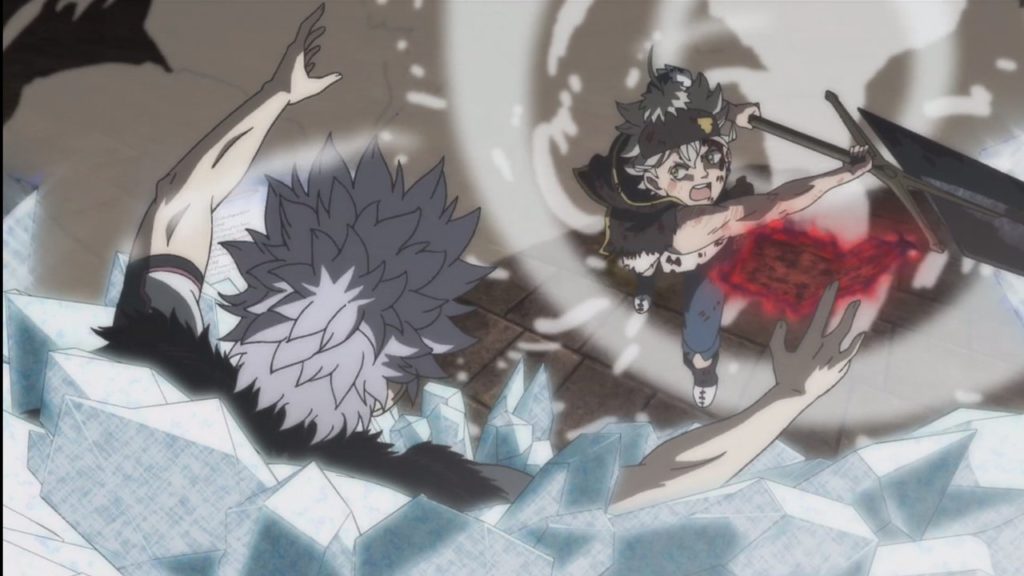Black Clover Season 1 Part 2 Review
Black Clover’s introductions are now out of the way, as we move into Part 2 (Episodes 11-19) with the continuation of Asta and Yuno’s journeys as Magic Knights. They have received their Grimoires and settled into their respective Magic Knight squads, Yuno, being inducted into the Golden Dawn, the best and highest regarded of all the Magic Knight squads. While in complete contrast, Asta, has joined the Black Bulls who are the lowest performing squad and renowned for their reckless and destructive behaviour.

This set of episodes introduces some welcome changes to the series structure with the focus of the story feeling much more balanced when representing its two main characters. While the first 10 episodes almost exclusively focused on Asta’s exploits, this set shifts towards Yuno early on and balances out to showcase both as their stories converge in the later episodes. It focuses on each of them and their supporting squad members before going into the set’s main arc, involving both, as they encounter their first dungeon. It’s an effective way to tell the story as we not only see how our two protagonists develop in their squads but we also learn more about the supporting cast in these contrasting groups and how they differ.

The structure of the story going forward is essentially explained by demonstrating how missions work in these squads. There is a star ranking system in which the Magic Knight squads are rated against one another, with the highest performing squad, in this case the Golden Dawn, being statistically the best as they have gained the most stars. Stars are awarded for successful missions involving helping people, organisations or defeating threats. It’s a rather simple explanation, but it at least gives a framework to what will hopefully not become a repetitive, mission-based story structure for the series and gives an interesting competitive side to these magically powered groups.

Within those groups we are also given a deeper look at the supporting characters, particularly Mimosa and Klaus of the Golden Dawn along with Noelle and Luck of the Black Bulls. The involvement of these characters and their backstories further develop the series’ theme of the world’s disparity in class. The ability to use Magic, as well as the level to which it can be used, seems to often be measured by how highly regarded one’s class is. This is particularly clear through Klaus, who is very direct with his high regard for nobility and distaste for those below in the beginning. Further glimpses into Noelle’s backstory continues this theme and her character development continues to make her one of the most interesting characters. Luck’s backstory is probably the most interesting and welcome as it gives insight to his erratic, borderline psychotic behaviour at times, fleshing out what was a battle-hungry shonen trope previously.

This approach to world building, where it’s communicated as part of character development, rather than it being delivered through long dumps of expositional dialogue is where the series is beginning to find its footing. It still hasn’t escaped this issue and still has quite a generic shonen feel to it but it is a step in the right direction. Like others in the genre, there are several systems of power in terms of the magical abilities and groups, but when we learn of these through organic character exposition like this, it just makes the story feel a lot stronger. The antagonists during the dungeon arc in particular add an extra dimension by showing the intense political situation of the countries in this world along with how different these cultures can be.

The dungeon arc delivers what we would expect of the series with a focus on battles between magic users. The strategies and abilities displayed are interesting but unfortunately the animation for these battles, handled by Studio Pierrot (Bleach, Naruto, Tokyo Ghoul), doesn’t always present these in the best fashion. Particularly when the powers of Mars are on display. His ice-focused abilities take the form of ice puppets, weapons and armour and all of these are done in some rather awkward CG models. They get the point of these abilities across fine but visually they just look out of place. There is also a vapour effect used in these battles against Mars that appears almost as an awkward filter over the screen that doesn’t really aid the visual appeal. In terms of the animation itself, it has a few flurries of explosive movement that I wish there was more of in these conflicts, but the series is still early on and perhaps as the characters’ abilities develop (particularly Asta’s abilities which seem more physically involved than the majority of the cast) we will see more of this on display.

Due to this box set beginning a few episodes short of the traditional cour amount, starting at Episode 11 of Season 1, we have the same opening and closing as we did in Part 1 for the first three episodes. If you want to know my feelings on those you can find them in my review of Part 1. From Episode 14 onwards, however, we are treated to a brand new set of songs book-ending each episode. “PAiNT it BLACK” by BiSH is a good upbeat opening with a lot of energy but I was really won over by the closing “Amazing Dreams” by Swanky Dank. It is first introduced at a strong conclusion to an episode and is a strong, guitar focused song that makes an interesting shift from the sombre closing used through the first thirteen episodes. In terms of the voice acting it has remained fairly consistent from Part 1 but with improvements in terms of Yuno getting more emotional range compared to his very stoic portrayal in Part 1 and Asta screams much, much less which is a definite improvement.

On the Blu-ray disc you will find a number of extras, particularly good considering the Part 2 has quite low episode count of nine episodes (Episodes 11-19). These include commentaries for Episodes 12 and 15, Inside The New Studio J Featurette, Clover Clips Special Edition, Inside the episode: Black Clover Highlights Episodes 10-18, trailers, along with textless opening and closing songs. More from behind the scenes being shown is always welcome, and I particularly any glimpse into the voice over process, unfortunately the only extras included with the DVD release are Clover Clips Special Edition. The approach to the episodes being included in these parts doesn’t seem to be a case of simply dividing up the season into equal parts (51 episodes in total for Season 1) but more divided by arc. While this avoids with any awkward cut-off points with these sets each concluding a story arc, it does mean that we may have some awkward cases with low episode counts like this with nine episodes when many other ongoing shonen series will release by cour.
Overall Black Clover has managed to move past its awkward start and is beginning to find its footing, although, it’s still very typical of many other ongoing shonen series that have come before it. But given how long the series is and its length overall so far, this is still early and I am pretty positive about how it could grow as it continues.


